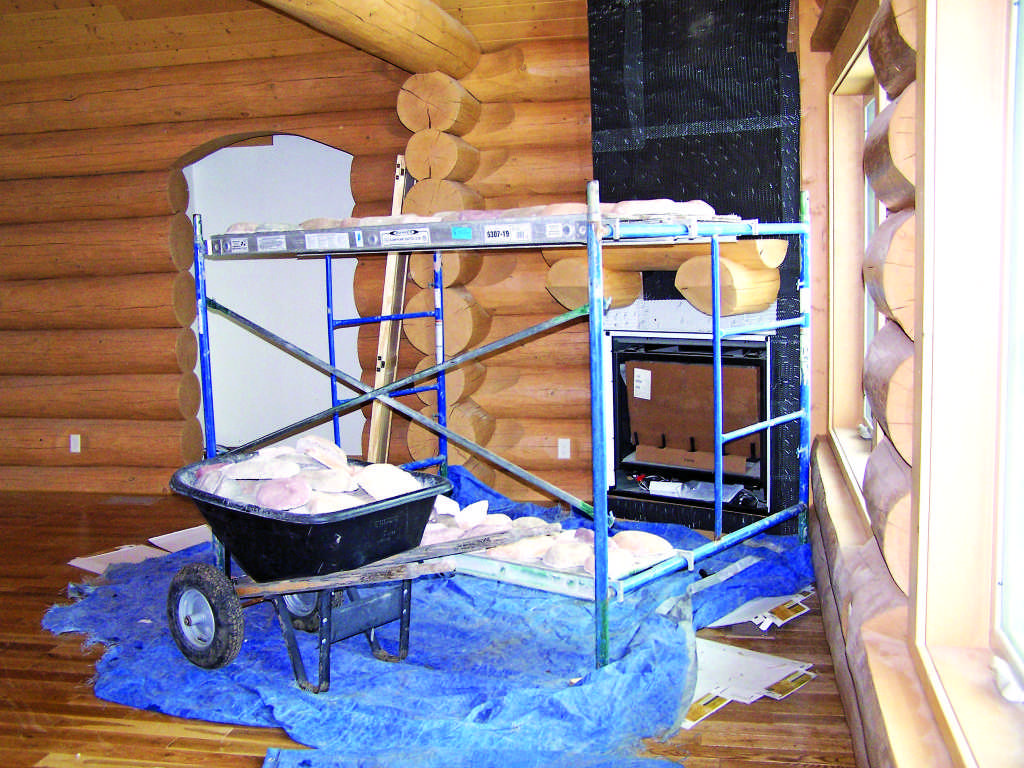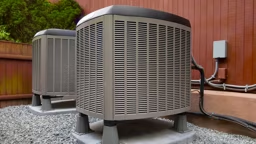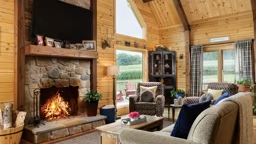Even though fireplaces don’t often serve their original purpose, towering stone chimneys and massive hearths are staples of log-home design. But they can also burn up a lot of cash. Consider their placement and how you will use them. Artificial-stone fireplaces can be indistinguishable from real stone but at a third the cost.
Skilled stonemasons can be hard to find and often charge a premium rate. Artificial stone installs faster and can look as good as the real thing. Installers are much easier to find. In many areas, wood fireplaces are giving way to gas or propane models. Open fireplaces are gradually yielding to enclosed fireplace units.
Glass-fronted enclosed units still let you gaze into dancing flames and feel the radiant warmth of the fire. However, they don’t pull heated air from the room and send it up the chimney, creating a chilling draft. Wood fires require either a lot of elbow grease to cut, haul and stack firewood or regular visits by a firewood provider.
Energy Efficiency
Depending on the energy efficiency of your home, a wood-burning fireplace can cost considerably more to operate than a gas model. Wood burning also carries a housecleaning and maintenance premium that includes regular visits from a chimney sweep and frequent cleaning of ash and wood debris.
Consider combining the romance of a hearth with the energy efficiency of a woodstove (some of which actually use natural gas or propane). Efficient woodstoves equipped with glass doors still allow viewing the fire while providing enough heat to serve even larger homes.
If you live in a remote area, a wood, gas or propane woodstove can keep you warm even when storms shut down electric power.
Find a Builder
A big challenge of building a custom log home is finding someone who’ll build it properly. Log-home companies have developed expertly engineered building systems that require builders understand and follow log-stacking instructions to the letter. Even experienced log builders might be unfamiliar with certain companies’ systems.
Fortunately, many companies have detailed construction manuals that explain the finer points of their systems. Even better, more companies are playing a role in the construction of their homes by locating, training and certifying builders. A few have even set up subsidiary companies that provide construction services. These services are usually limited geographically.
If you’re building farther afield or buying your log package from a company that doesn’t provide construction services, your best bet is to check with the dealer who’s selling you your new home. Dealers know who builds log homes in their territory and can recommend several candidates.
Some dealers even build the homes they sell. You’re under no obligation to use any of these builders. If you decide on a builder who’s new to log construction or your company’s building system, remember that many log providers include technical assistance in the package price. Some even send crews to stack the logs to make sure they conform to their system. From this point, the regular builder takes over.












